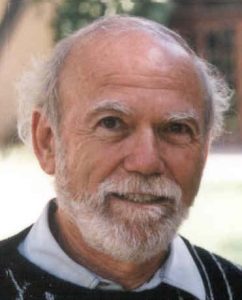 |
Professor Barry Barish Barry Barish is Linde Professor of Physics, emeritus, at Caltech and a founder of the Laser Interferometer Gravitational-wave Observatory (LIGO). Earlier in his high-energy physics research career, he performed other noteworthy experiments, especially those at Fermilab using high-energy neutrino collisions to reveal the quark substructure of the nucleon. These experiments were among the first to observe the weak neutral current, a linchpin of the electroweak unification theory. He served on many important science committees, including co-chairing the High Energy Physics Advisory Panel subpanel that developed a long-range plan for U.S. high energy physics in 2001. From 2005 to 2013 he was the Director of the Global Design Effort for the International Linear Collider (ILC). He has been the recipient of numerous awards and prizes, culminating in sharing, with Rainer Weiss and Kip Thorne, the 2017 Nobel Prize in Physics for “decisive contributions to the LIGO detector and the observation of gravitational waves”. Click here for Professor Barish’s full biography and CV. Speaking on Monday, October 29, 2018, 8:45 – 9:30 a.m. |
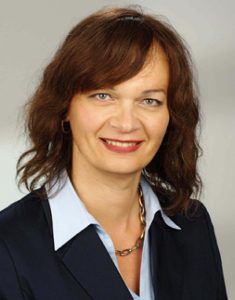 |
Dr. Tabea Arndt Tabea Arndt is a physicist who started her studies at the KIT, Germany, on the subject of RE-123 thin films gaining her PhD in 1995. The studies have been accompanied by internships at the IBM research center near Stuttgart. She got a grant “Secure Talents for Innovation” and moved to Vacuumschmelze GmbH working on magnetic materials, alloys and wires of low and high temperature superconductors (NbTi, Nb3Sn, Bi-2223) to be used in magnet and energy technology. She continued her work on superconducting wires and tapes in carve outs of Vacuumschmelze and various companies supplying wires and parts for MRI, NMR and High Energy Physics magnets, transformers, cables, motors & generators and SFCLs (CERN LHC and KIT). In 2008 she joined Siemens CT, Erlangen, and became Head of Research Group “Superconducting Applications”, so changing focus from materials to applications. She pushed solutions and applications in the field of superconductivity by internal and public funded projects, e.g. on Roebel-cables, MgB2, Superconducting Fault Current limiters, Motors & Generators, Transformers, Cable Solutions, Magnets and Electric Aircrafts. In 2015 she was promoted to the position of the Principal Key Expert “Electromagnetic Systems”. In this function she is responsible for the high level scientific and technical approaches CT is addressing in this field. In parallel to the purely research and business related work she serves as a German delegate to the International Energy Agency, Technical Collaboration Program HTS, as a panel member of DKE/ IEC (TC90), as a board member of Conectus, ISIS and ESAS and as a panel member (deputy chair) of European Research Council, Grants for Starters and Consolidators, 2008-2014. Occasionally she gives lectures at superconductivity schools in Europe and Japan. Speaking on Tuesday, October 30, 2018, 8:00 – 8:45 a.m. |
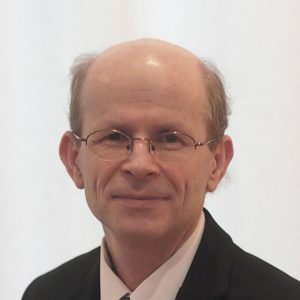 |
Dr. Peter Lee Peter Lee is the Associate Director of the Applied Superconductivity Center at the National High Magnetic Field Laboratory at Florida State University. He has been investigating the relationships between the microstructure and microchemistry of superconductors and their superconducting properties from early development of Nb-Ti for the Superconducting Supercollider in the 1980s, to the current push to advance Nb3Sn properties for the Future Circular Collider. He is a past President of the Board of Directors on the International Cryogenic Materials Commission and was elected to the Board of the Applied Superconductivity Conference in 2002. He is also an Associate Editor of the journal IEEE Trans. Applied Superconductivity and is the archivist for the IEEE Council on Applied Superconductivity. In 2013 he was awarded the status of Distinguished University Scholar at Florida State University and in 2014 the IEEE Dr. James Wong Award for Continuing and Significant Contributions to Applied Superconductor Materials Technology. His current interests are in developing simple microscopy techniques to probe the limitations to performance of Nb and Nb3Sn-based SRF cavities and the potential for improvement in the critical current density of Nb3Sn strands for high magnetic field applications. Speaking on Wednesday, October 31, 2018, 8:00 – 8:45 a.m. |
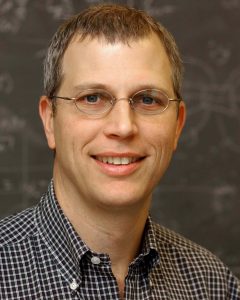 |
Professor Robert J. Schoelkopf Robert Schoelkopf is the Sterling Professor of Applied Physics and Physics at Yale University. His research focuses on the development of superconducting devices for quantum information processing, which are leading to revolutionary advances in computing. His group is a leader in the development of solid-state quantum bits (qubits) for quantum computing, and the advancement of their performance to practical levels. Together with his collaborators at Yale, Professors Michel Devoret and Steve Girvin, their team created the new field of “circuit quantum electrodynamics,” which allows quantum information to be distributed by microwave signals on wires. His lab has produced many firsts in the field based on these ideas, including the development of a “quantum bus” for information, and the first demonstrations of quantum algorithms and quantum error correction with integrated circuits. A graduate of Princeton University, Schoelkopf earned his Ph.D. at the California Institute of Technology. From 1986 to 1988 he was an electrical/cryogenic engineer in the Laboratory for High-Energy Astrophysics at NASA’s Goddard Space Flight Center, where he developed low-temperature radiation detectors and cryogenic instrumentation for future space missions. Schoelkopf, who came to Yale as a postdoctoral researcher in 1995, joined the faculty in 1998, becoming a full professor in 2003. He is also the Director of the Yale Quantum Institute. Professor Schoelkopf has been recognized as a fellow of both the American Association for the Advancement of Science and the American Physical Society. In 2009, he was awarded the Joseph F. Keithley Award of the American Physical Society for the development of high-frequency measurement techniques to probe quantum devices and nanostructures, and in 2013 he shared, with his colleague Michel Devoret, the John Stewart Bell Prize for fundamental and pioneering experimental advances in superconducting qubits. In 2014 he received, the Max Planck Forschungspreis, and together with Devoret and John Martinis (UCSB), the Fritz London Memorial Prize for Low Temperature Physics. In 2015, Professor Schoelkopf was elected to the National Academy of Science. In 2015 Schoelkopf co-founded (together with Michel Devoret and Luigi Frunzio) Quantum Circuits, Inc. (or QCI, www.quantumcircuits.com), a private venture that is commercializing the technology of superconducting circuits to produce the first useful and general-purpose quantum computers. Speaking on Thursday, November 1, 2018, 8:00 – 8:45 a.m. |
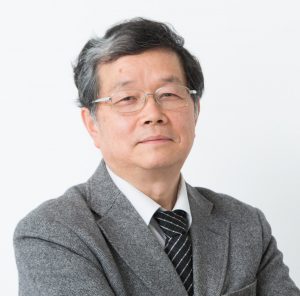 |
Dr. Hideaki Maeda Hideaki Maeda is playing a leading role as a program manager of the newly started MIRAI-Program, focused on developing (a) joining technologies between HTSs, (b) persistent HTS NMR magnets and (c) HTS cables for railway systems. Maeda received his M. Eng. in 1975 and D. Eng. in 1979 at Waseda University, Japan. He joined the Toshiba R&D Center in 1975, developing cutting edge superconducting magnets such as those for Maglev trains, cryocooler-cooled magnets, and a large HTS magnet for silicon single crystal growth and other applications. After moving from Toshiba to RIKEN, he became the Facility Director of the RIKEN-NMR facility in 2011. He and collaborators succeeded in developing the world’s highest magnetic field NMR magnet, operating at 24 T, comprised of HTS inner coils and LTS outer coils. He moved to the Japan Science and Technology Agency in 2018 to become the program manager of the MIRAI-Program. He is still a senior visiting scientist at RIKEN. He received the Commendation of the Minister of Education, Culture, Sports, Science and Technology in 2016, and the Outstanding Achievement Award by the Cryogenics and Superconductivity Society of Japan in 2017. He is currently chair of the Technical Committee on Superconducting Apparatuses of the Institute of Electrical Engineers of Japan. Speaking on Thursday, November 1, 2018, 8:45 – 9:30 a.m. |
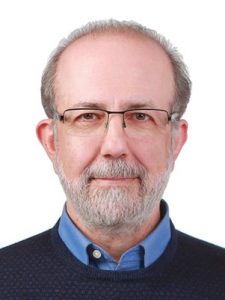 |
Professor Yannis Semertzidis Yannis K. Semertzidis is the director of the Center for Axion and Precision Physics Research in Daejeon, Korea which is funded by the Institute for Basic Science. At the center, he is engaging researchers in the fundamentals of particle and nuclear physics to gain a deeper understanding of the nature of dark matter in our universe as well as the matter anti-matter asymmetry mystery of our universe. He is creating a state-of-the-art facility to explore the dark-matter axion in a process by converting them into microwave photons inside of a high quality microwave cavity contained within a large volume, high magnetic field. Dr. Semertzidis was also a tenured, senior physicist at Brookhaven National Laboratory in New York. While at BNL he focused mainly on two experimental projects: one exploring the dark-matter axion, and another performing precision physics in storage rings including the muon g-2 experiment and the search for the electric dipole moment of protons with unprecedented sensitivity. He is a recipient of the BNL Science and Technology Award for his contributions toward the muon g-2 experiment and he is a fellow of the American Physical Society. Speaking on Friday, November 2, 2018, 10:30 – 11:15 a.m. |
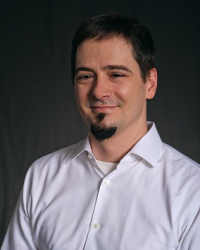 |
Professor Gray Rybka Gray Rybka is an Assistant Professor of Physics at the University of Washington. His research focuses on precision measurements to expand our knowledge of the fundamental particle building blocks of the universe. These experiments often involve the use of superconducting quantum electronics in a deep cryogenic environment. He is co-spokesperson of the Axion Dark Matter Experiment (ADMX), which searches for microwave signals produced from dark matter conversion in a superconducting magnetic field. He is also involved in the Project-8 effort to measure the neutrino mass scale using Cyclotron Radiation Emission Spectroscopy. |
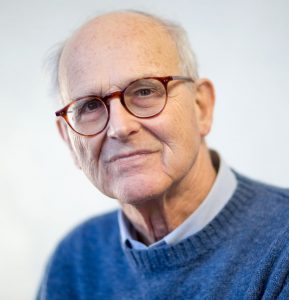 |
Professor Rainer Weiss Rainer Weiss, born September 29, 1932 Berlin, Germany, MIT BS 1955, PhD 1962, Tufts University Physics faculty 1960-1962, Post doc Princeton 1962-1964, MIT Physics faculty 1964-2001, emeritus 2001—, Adjunct Professor of Physics LSU 2001—. Primary areas of research: Atomic clocks, Cosmic background radiation measurements, Gravitational wave detection. Click here for more information. Speaking on Friday, November 2, 2018, 11:35 a.m. – 12:20 p.m. |